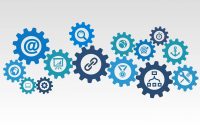Elevating Performance and Safety: A Comprehensive Guide to Testing Equipment and Machine Testers

In the world of manufacturing, construction, and other industries that rely on machinery, the importance of testing equipment and machine testers cannot be overstated. These tools are essential for ensuring that machines are operating at their highest level of performance and safety. In this comprehensive guide, we will explore the various types of testing equipment available, how to select the right equipment for your needs, and the importance of proper use and maintenance.
The Importance of Testing Equipment
Testing equipment and machine testers play a vital role in maintaining the performance and safety of machines. Some of the key benefits of using these tools include:
Improved performance: Regular testing ensures that machines are operating at their optimal level, resulting in increased productivity and efficiency.
Reduced downtime: Identifying and addressing potential issues before they become major problems can help minimize downtime and keep your operations running smoothly.
Enhanced safety: Regular testing can help identify potential hazards and ensure that safety protocols are being followed, reducing the risk of accidents and injuries.
Types of Testing Equipment and Machine Testers
There is a wide variety of testing equipment and machine testers available, each designed for specific applications and industries. Some common types include:
Vibration testers: These devices measure the vibrations produced by machines, helping to identify potential issues such as misalignment, imbalance, or bearing wear.
Electrical testers: These tools are used to test the electrical components of machines, ensuring that they are functioning correctly and safely.
Force Gauge Testers: Force gauge testers are indispensable instruments for measuring the force exerted by or applied to various objects. If you learn more about these versatile devices, you’ll know that these can be used to assess tension, compression, and even torque, providing accurate and reliable data for applications such as product testing, assembly line quality checks, and material strength evaluation.
Pressure testers: Pressure testers measure the pressure within pipes, tanks, and other vessels, helping to identify leaks or other potential issues.
Temperature testers: These devices measure the temperature of various components within a machine, ensuring that they are operating within their specified range.
Weight calibrators: Weight calibrators, also known as calibration weights, are used to ensure the accuracy and precision of weighing instruments such as balances and scales. To learn more about this test, click the link.
Selecting the Right Testing Equipment
When choosing testing equipment and machine testers, consider the following factors:
Application: Determine the specific testing requirements for your machines and select equipment that is designed for those applications.
Accuracy: Choose testing equipment that provides accurate and reliable results, ensuring that potential issues are identified and addressed.
Ease of use: Select equipment that is user-friendly and can be easily operated by your team members.
Durability: Look for testing equipment that is built to withstand the rigors of your industry and will provide reliable performance for years to come.
Proper Use and Maintenance of Testing Equipment
To get the most out of your testing equipment and machine testers, it’s important to follow proper usage and maintenance guidelines:
Training: Ensure that all team members who will be using the equipment are properly trained in its operation and safety procedures.
Regular inspections: Conduct regular inspections of your testing equipment to ensure that it is in good working order and free from damage or wear.
Calibration: Regularly calibrate your testing equipment to ensure that it is providing accurate and reliable results.
Cleaning and storage: Keep your testing equipment clean and store it in a safe and secure location when not in use.
Safety Considerations
When using testing equipment and machine testers, always prioritize safety:
Follow manufacturer guidelines: Always follow the manufacturer’s guidelines for the safe operation and maintenance of your testing equipment.
Wear appropriate personal protective equipment (PPE): Depending on the type of testing equipment being used, PPE such as safety goggles, gloves, or hearing protection may be necessary.
Stay alert: Be aware of your surroundings when using testing equipment and stay focused on the task at hand.
Conclusion
Investing in high-quality testing equipment and machine testers is essential for maintaining the performance and safety of your machines. By selecting the right equipment for your needs, following proper usage and maintenance guidelines, and prioritizing safety, you can help ensure that your machines continue to operate at their highest level of performance, resulting in increased productivity and efficiency for your business.


